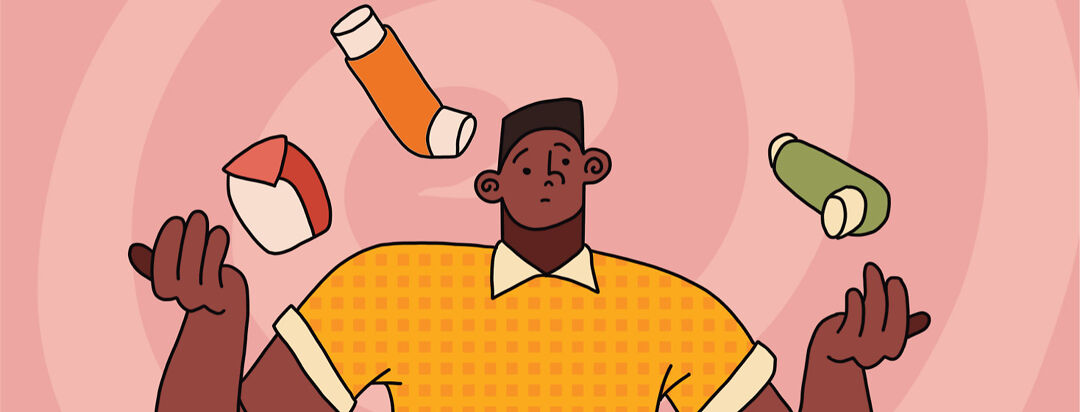Dos and Don’ts of Rescue Inhalers
Like many in our community, I couldn't imagine life without my trusty rescue inhaler. Over the 35 years I've been dealing with asthma, this little device has become a reliable companion.
I've noticed the same sentiment among many of my friends with COPD – our rescue inhalers are like steadfast allies. Now, let's talk about some important dos and don'ts when it comes to using your rescue inhaler.
Dos and don'ts for using your inhaler effectively
Do: Keep it handy
You're out and about, maybe shopping, when suddenly, your breath escapes you. The instinct is to reach for your inhaler for that crucial relief. But what if it's not there?
For many of us, carrying our inhalers wherever we go becomes a habit. Whether tucked into a purse or pocket or within arm's reach, having our inhaler on hand is like having a reliable friend ready to help when we need it most.
Don’t: Delay use
Imagine you're engrossed in a project, and those early warning symptoms, like chest tightness, start to make themselves known. Your initial inclination might be to brush it off and power through it, especially if the symptoms are mild.
However, delaying treatment can escalate into a full-fledged flare-up. A more effective strategy is to take a break and follow your COPD action plan. If it involves using your rescue inhaler, go ahead and use it instead of waiting.
Do: Learn as much as you can
Your inhaler is a vital tool in managing your respiratory health. So, knowing how to use it properly is key. Start by familiarizing yourself with the specific type of inhaler your doctor prescribed. Pay attention to the inhalation technique, ensuring you coordinate pressing the canister with a slow, deep breath.
If you have any uncertainties, don't hesitate to ask your doctor or pharmacist for a demonstration. Keep your inhaler clean, check the expiration date regularly, and always follow the prescribed dosage instructions. Being well-versed in the proper use of your inhaler ensures you get the maximum benefit when you need it most.
Don’t: Overuse your inhaler
Feeling short of breath and reaching for your inhaler can be a welcome relief. But it's important not to fall into the trap of overusing it.
The temptation to take an extra puff when breathlessness persists may seem like a quick fix. But it's essential to recognize that overusing your inhaler signals that your COPD may be flaring up.
Using your inhaler excessively could be a sign that something isn't quite right. If you find yourself relying on extra puffs frequently, consider it an early warning sign as it's a cue to seek medical attention promptly. Your doctor can ensure you receive the necessary support and adjustments to keep your COPD management on track.
Do: Keep the cap on when storing it
In the past, I found myself violating this rule quite often. However, after experiencing the consequences enough times, I learned my lesson.
The inadvertent inhalation of lint triggered coughing fits, even exacerbating flare-ups. To improve adherence, I now make a conscious effort to keep the cap securely over the mouthpiece when storing my inhaler. Thankfully, newer designs with connected caps have made this task more manageable, fostering better compliance.
Don't: Forget to check the counter
In the past, older inhaler designs lacked a counter, requiring creative techniques to gauge the remaining medicine inside the canister. Fortunately, contemporary pharmaceuticals now simplify this process by incorporating a counter on the device.
However, amid life's busyness, I sometimes forget to check the counter. Suddenly, when short of breath, I reach for my inhaler, only to find it empty.
A more effective strategy, I've learned, is to diligently monitor the counter. Once it dwindles to 20 or fewer puffs, I make a call to secure a replacement inhaler. This ensures that as one inhaler nears depletion, I have another ready to provide the relief I need.
Featured Forum
View all responsesGetting the most out of our inhaler
These straightforward tips aim to optimize the use of your rescue inhalers, ensuring you derive the maximum benefit when you need it most. Do you have additional tips or personal insights to share?
We'd love to hear from you in the comments below. Your experiences could offer valuable perspectives and support to others in our community.

Join the conversation